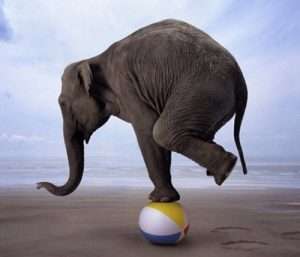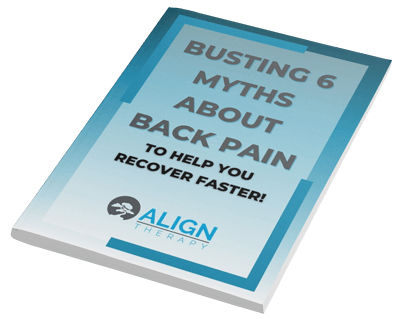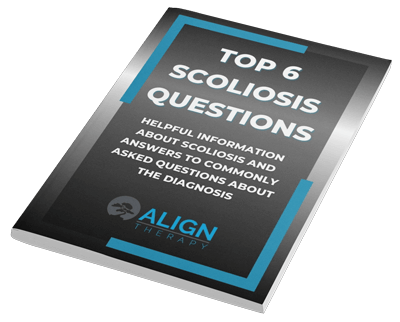Losing balance? It happens gradually. One day you are able to walk outside on your lawn doing yardwork, and the next you are struggling to bend over and pull that weed without losing your balance. It is not uncommon for me to see someone in the clinic who feels like their balance “all the sudden” just got worse.
Yesterday, I was helping a neighbor with construction of a shop in his backyard. My job was to help him get the pieces of wood onto the roof so he could nail them in. This was not a terribly high roof, but high enough to not want to fall off.
He made the comment several times “I’m not as young as I used to be” or “when I was younger, this wouldn’t have bothered me at all”.
Now, he did really well up there on that roof, and we got everything nailed down without injury, but how does that happen? Why does our balance go downhill as we age? There are some specific reasons, and the good news is, it is normal. The really good news though is there are things you can do to get it back.
Understanding why our balance gets worse is key to understanding how to fix it.
(Disclaimer: This blog is for information purposes only. Please seek the advice and help of a health care professional before working on your balance on your own. There is a real risk of falls with balance training and this should only be done with supervision.)
Use it or Lose It!
One main reason balance gets worse as we age is because we don’t use it as much. Think about it. When you are 6 and 7 you barely sit still. Climbing trees, running around a playground, or jumping off couches. You are constantly using balance and training your body to get better at it.
When you are 16 and 17, you are still active, but most likely more specific to things you like to do like sports or activities with friends. You are still challenging your balance and your body adapts and does better.
Then, you graduate college, get a desk job, and can only really do your hobbies on the weekends. (Obviously I am generalizing here!). Now, during the week you are not challenging your balance so your body doesn’t adapt. Well, actually, it does adapt, just in the opposite direction.
This cycle continues where we aren’t as active and aren’t challenging the balance system, so our bodies put effort elsewhere. Instead of building the nerves that control balance, some of those are repurposed to other things.
The result? Less balance!
So, that brings us to the first way to improve balance TODAY!
1. Move More

This could be anything from increasing your walking to picking up a new sport. You could even buy a fitbit or a smartwatch with a pedometer in it and use that to gauge your activity level.
If you are not doing too bad and just want to increase your balance for sports or certain activities, then do them more. The more you do them, the more your body makes adjustments to improve.
One key thing though! Make sure it is something you enjoy. It is much easier to increase your activity level if it is something you enjoy doing.
Physiological Changes
I won’t go into too much depth, but as we age, our bodies change. I know…SHOCKER! Obviously our bodies on the outside change, but on the inside they also change.
Muscle strength decreases as we age. This isn’t just because we move less, but that also has something to do with it. There are many age-related changes that happen in the connective tissue of the body that contribute to this. The bottom line is that we just don’t have the same strength as we age.
Our joints also lose some mobility because of the same connective tissue changes. This leads to less ability in correcting for a loss of balance. With more stiffness, our joints don’t talk as easily with the brain to tell them we are off balance, along with what to do about it.
This brings us to the second way to improve balance.
2. Strengthen and Stretch Your Muscles
This kind of goes along with #1 above. As you are more active, your muscles will be used more and will get stronger. This, however, needs to go further than that. You need to bring your muscle strength up higher than your activity level. In this way, you can handle losing your balance easier.
Let me put it this way. If you are standing on one leg to put your pant leg on, would this be easier or harder if the leg you are standing on was weak? The stronger your legs, hips, core, etc are, the better you will be able to do those things.
Stretching can also help to increase your flexibility. When your joints are healthy and mobile, they send more accurate signals to the brain letting it know how to make corrections. It is also easier to adjust for loss of balance if you have room to move.
Starting a strengthening routine can be as easy as trying to not use your hands when getting off a chair. Before starting a specific strengthening routine, especially if you have other health issues, please consult with a professional. We don’t want to create other problems.
The Challenge
 When I was in High School, I began rock climbing with my older brother. At first, I was a bit uneasy at the edge of a cliff. After many times up and down the cliff, however, I started to be much more comfortable.
When I was in High School, I began rock climbing with my older brother. At first, I was a bit uneasy at the edge of a cliff. After many times up and down the cliff, however, I started to be much more comfortable.
What changed? I was challenging my ability to balance and stay steady on the edge of a cliff. My body and brain then made the necessary changes to help me trust myself, as well as get better at it.
This is the same with things like walking on uneven surfaces. If we never challenge our ability to do those things, we won’t be able to do them. Then, we revert back to things that are “comfortable” and not difficult and the cycle continues.
So, now, the hard part…which brings us to number 3.
3. Challenge Your Balance
I mention this is the hard part because this needs to be done safely. The last thing we want is to have someone challenge their balance at home and cause an injury. So, please get some guidance with this one. A Physical Therapist or even the right trainer can definitely help you know your limits.
 The idea is this. Find your current ability and then increase the challenge.
The idea is this. Find your current ability and then increase the challenge.
For some, this will be finding that it is easy to walk on a line. They might be able to increase the challenge to doing this on an uneven surface. If that is where their skill level is, maybe even a slack line (kind of like a tight rope, but not tight).
For others, walking with a cane is where their level is currently. To progress this, and increase the challenge, they may need to practice without the cane in a hallway where they can grab onto things.
Then, when that challenge isn’t challenging, you move on to the next challenge.
Like I said many times in this post, PLEASE get some guidance before doing anything that may be risky. At Align Therapy, we are trained to work with people who have balance issues. We can help guide you in your search for better and safer balance.
Implementing the three tips above will help you regain balance you have lost or will help improve your balance to the level you are looking for.
If you need help with your goals, please don’t hesitate to email me at david@aligntherapyutah.com, or give us a call at (801)980-0860.
Thanks for reading!



